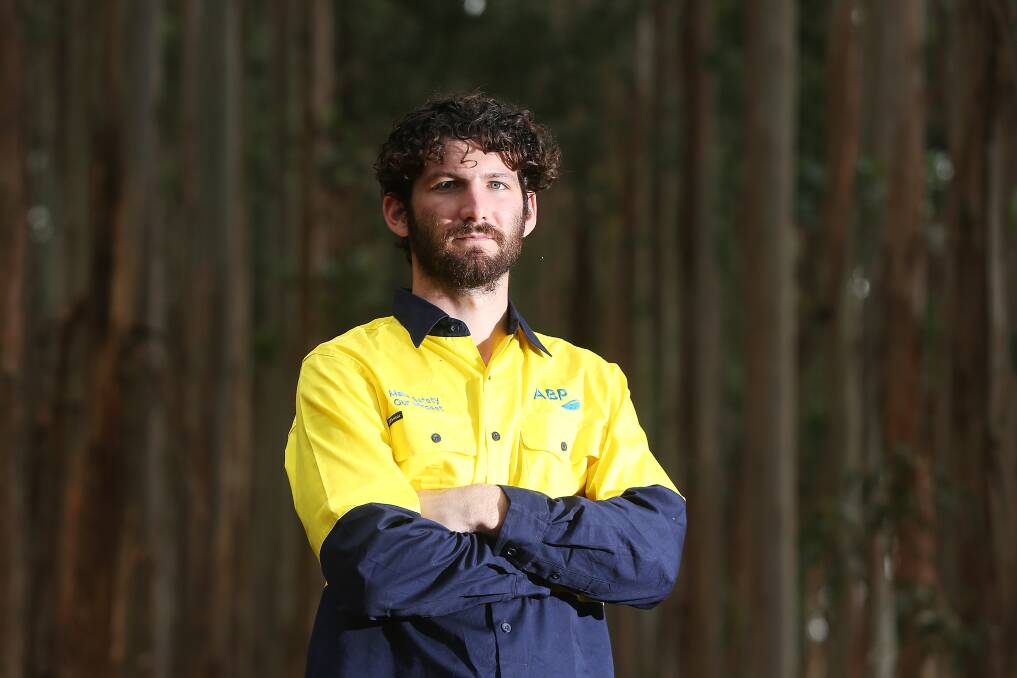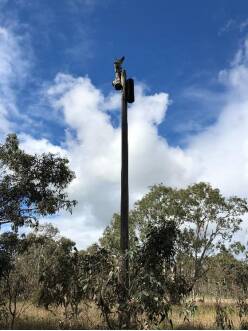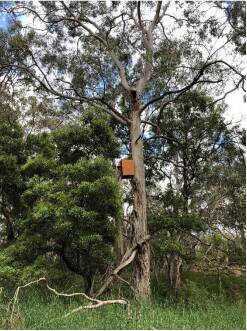
Providing safe breeding sanctuaries for threatened wildlife in the south-west has led to never-before-seen outcomes for an endangered bird.
Subscribe now for unlimited access.
$0/
(min cost $0)
or signup to continue reading
Port Fairy's Jack Carter, who works in the bluegum plantations across the south-west, has spent the past three years protecting the region's most endangered species.
A recent inspection of breeding nests for the endangered south-eastern red-tailed black cockatoo near Casterton found more than 60 per cent were in the artificially placed nest boxes.
"It's projects like this that make me love working in land management - it goes to show that forestry and conservation really can work together," Mr Carter said.
For the past two decades, nesting boxes had been placed in remnant forest scattered across the Australian Bluegum Plantations' estates which cover 55,000 hectares of the Green Triangle area.
"The nesting box program is just one of the measures we have made to enhance the population of native birds across our estate," Mr Carter said.

The nesting box program started in the early 2000s in partnership with local environmental groups with the installation of 19 boxes.
Today that has grown to 46 nest boxes and target species such as owls, microbats, parrots, and gliders.
Department of Environment, Land, Water and Planning red-tailed black cockatoo specialist Richard Hill found 13 nests during a recent inspection and said it was "unusual" to find such a high number - eight of them on ABP estates.

He said the bird's population decline, which now sits between 1000 and 1500, was being fuelled by a shortage of good quality feed in stringybark woodlands partly because of illegally using it for firewood .
Nest boxes for the powerful owl, which is listed as vulnerable, have been set up at Budj Bim and in a remnant forest near Hotspur.
Another 12 nests have been installed for microbats and seven for large parrots in plantations.
A partnership with the Basalt to Bay Landcare Network at the Saint Helens Flora Reserve, north of Yambuk, includes seven boxes for forest owls, gliders and bats.
Mr Carter that said as well as creating safe breeding locations, they had also replanted more than 20 hectares of stringybark in recent years, a crucial food source for impacted species.
Green Triangle Forest Industries Hub executive general manager Liz McKinnon said that while the plan was to grow the region's forestry estate by 200 million trees in the next decade to meet anticipated domestic demand, it would only be achieved with sustainable and holistic forestry practice working alongside our community partners
Read more:
Have you signed up to The Standard's daily newsletter and breaking news emails? You can register below and make sure you are up to date with everything that's happening in the south-west.

